Uploading Work Plan with Subphases
Prerequisite for Importing SubphasesEnsure you have Subphases enabled in your Mosaic account. For more information on Subphases, see this Help Doc.
Legacy Work Plan (without Subphases) ImportDocumentation for the Legacy Work Plan (without Subphases) Importer can be found here.
While Mosaic can be used to create Work Plan, Work Plan can also be uploaded from tools to Mosaic for complete overviews on your team's current, past, or upcoming work
Download the Sample FileBefore uploading, download the import template to ensure a smooth upload process.
Part 1: Complete the File
To upload Work Plan via spreadsheets:
-
Confirm either Mosaic Support or your Customer Success Manager have enabled the Work Plan upload tool on your account. To request this tool be added to your account, reach out to our team via [email protected]
-
Next, fill out the Work Plan information on the template file. download here
It is recommended to use pre-existing projects and phases in MosaicIt is possible to create and import new projects for your imported Work Plan during the import process. However, to help prevent any mistakes when importing, it is recommended to import/update Work Plan details into a project that already exists on Mosaic.
If importing into a pre-existing project then the names and numbers must match exactly as is on Mosaic. If they do not match exactly you may get error fields during the import process, indicating where the names do not match, or unintentionally create new projects.
Importing Phases Reference Numbers with Leading ZerosBoth Excel and CSV formats are supported for import. However, if your phase number includes a leading zero (e.g., "01"), we recommend using the CSV format. Excel may automatically remove leading zeros when displaying values in the formula, which can cause unexpected errors.
Here is an overview of the details needed for each column:
Field | Guide | Example | Required |
|---|---|---|---|
Employee Name | Full Employee Name.
Only required if the Member does not already exist or has not been invited to the team in Mosaic. If there are no matches, Mosaic will create a new Employee. Either Employee Email or Unassigned Role Name is required for the Work Plan to be properly assigned to the Member or Role. | Bob Smith | No |
Employee Email | Email of employee.
If there are no matches, Mosaic will create a new employee with the First Name, Last Name and Email. | No | |
Unassigned Role Name | Role of the employee.
Only required if Employee Email is not provided. Entering only a Role without an Email will create an Unassigned Work Plan. Use an Open Role only when assigning a Work Plan to an open role. The Open Role Work Plan will be imported into the first available Open Role. Either Employee Email or Unassigned Role Name must be provided for the Work Plan to be properly assigned. | Architect | No |
Portfolio | Name of portfolio containing the project.
| Sample Portfolio | Yes |
Project | Title of Project.
| Central Park | Yes |
Project Ref# | Project Reference Number.
| 1234.00 | Yes |
Phase | Title of Phase.
However, if the Project does have Phases, you must provide a Phase Name + Ref. Num. | Surveying | Yes |
Phase Ref# | Phase Reference Number.
If provided, the Phase Name + Phase Ref. Num. combination must match an existing phase on Mosaic, or Mosaic will create a new Phase. | 123 | Yes |
Subphase 1 | Title of 1st Subphase Level. | Concept Development | No |
Subphase Ref# 1 | Reference Number of 1st Subphase Level. | 120 | No |
Subphase 2 | Title of 2nd Subphase Level. | Construction Documents | No |
Subphase Ref# 2 | Reference Number of 2nd Subphase Level. | 300 | No |
... | ... | ... | ... |
Subphase 9 | Title of 9th Subphase Level. | Blueprint Drafting | No |
Subphase Ref# 9 | Reference Number of 9th Subphase Level. | 14 | No |
Work Category | Title of Work Category. Type of work being performed.
| Planning | No |
Work Category Ref# | Work Category Reference Number. | B50 | No |
Start Date | Date the work will start/started.
| 2021-05-04 | Yes |
End Date | Date the work will end/ended.
| 2021-12-04 | Yes |
Total Hours | Total number of hours designated for the work plan. Cannot be used together with "Hours Per Day".
| 30 | Yes |
Description | Description of the work plan. | Fall 2024 Work Plan | No |
Every Line Denotes a New EntryFor each individual in the Work Plan, create a separate line. If a person is assigned to multiple phases or work categories, each assignment should also have its own line. For example, if you're adding two people to a project with two phases, but only one person is working on both phases, the spreadsheet should display three data lines.
Work Plan Hours LimitWork Plans must have a minimum value of 0.0001 Hrs/Day, or 1 hour for every 10000 workdays. Work Plans imported from CSV Import or from integrations are excluded from this limit.
Part 2: Upload the File
- Navigate to the Planner page from the sidebar menu on the left, and select the 3 dot menu beside the "sort" button under Work Plan, as shown below:
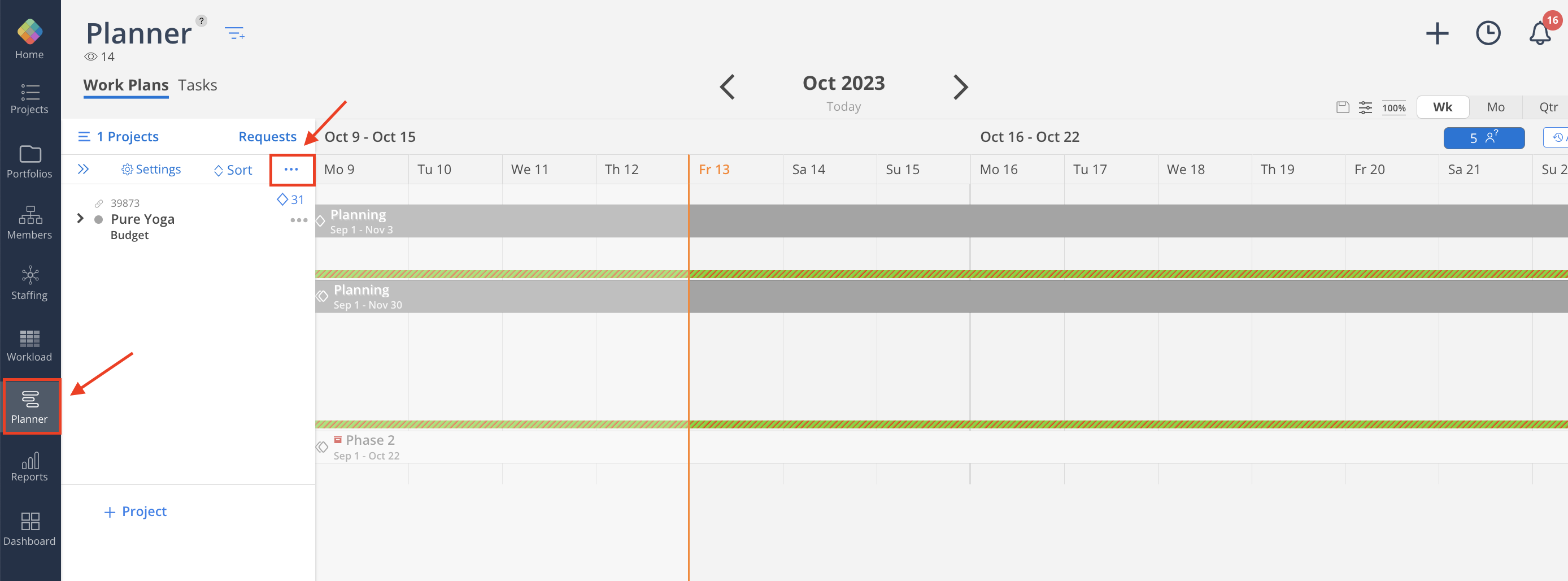
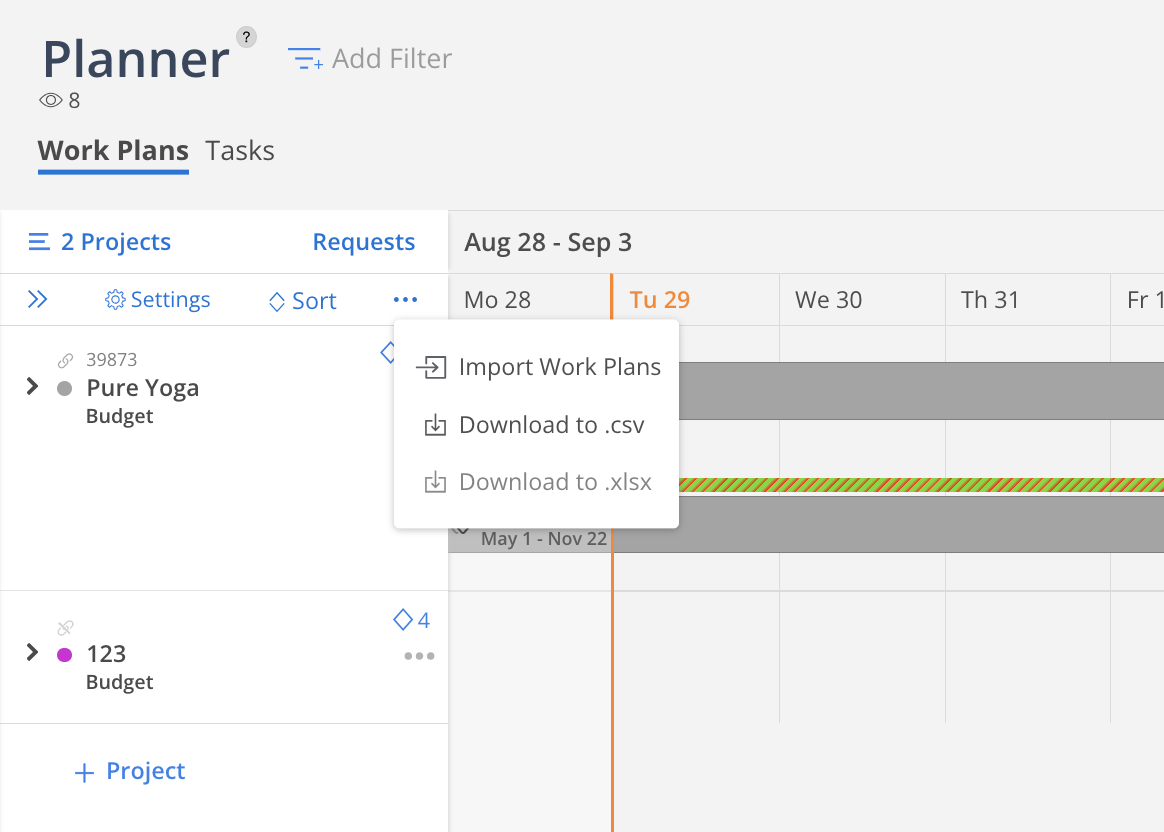
- Make sure the
Data to Importfield isWork Plan.
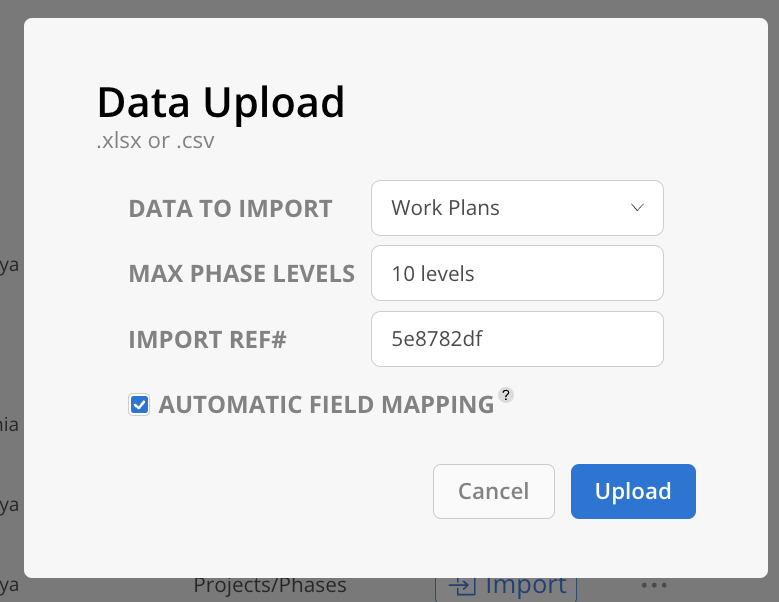
- Select the max levels of Phases you have and to include Work Category or not. The default max level is 10; the default is to not show Work Categories. Click on the
Uploadbutton.
Note: If Include Work Categories is not selected, the column will not show in the uploader.
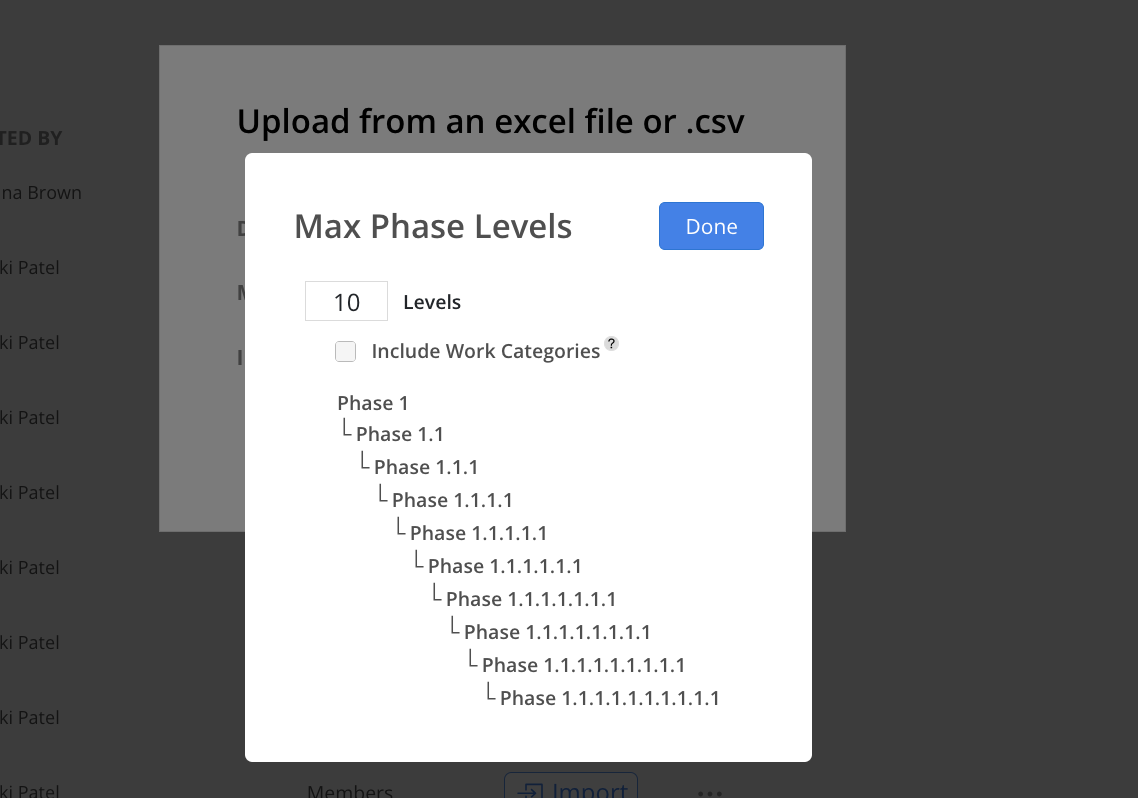
- Select the file you would like to import using the file selector or drag and drop the file here. After filling in the first row, the other rows should auto-populate.
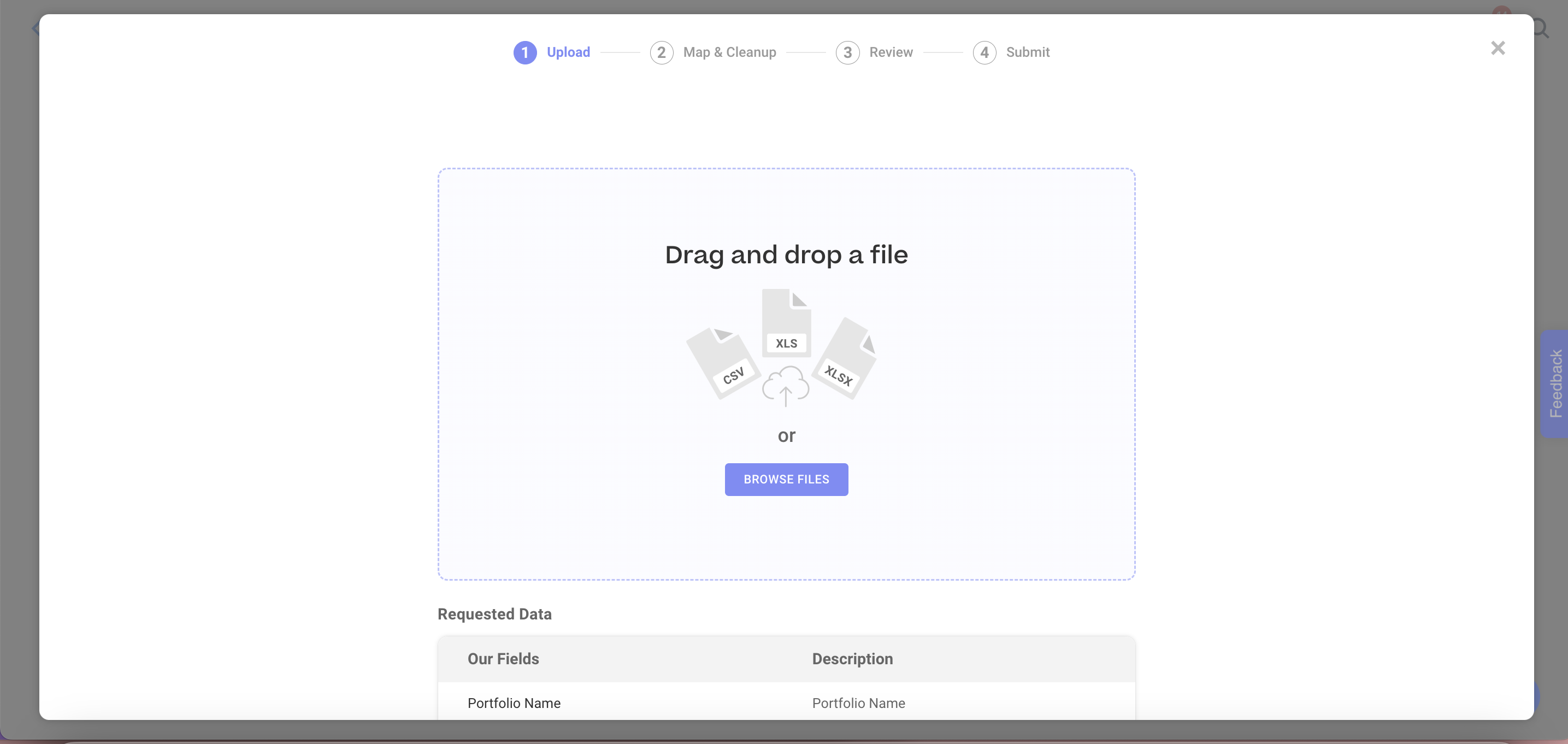
- For each of the columns, the software will try to auto-map the information that we need. You can also change the mapped columns by clicking the dropdown from your columns. It may take some time for the information to auto-populate in our field columns.

Column Mapping Filters:To streamline the mapping process, you can filter fields by a variety of factors. These include mapped vs. unmapped, required vs. optional, field errors, warnings, skipped rows, fields with formulas, SmartFill or QuickFixes. In addition, you can filter by field type, specific fields themselves or simply search for fields.
Select which columns to show
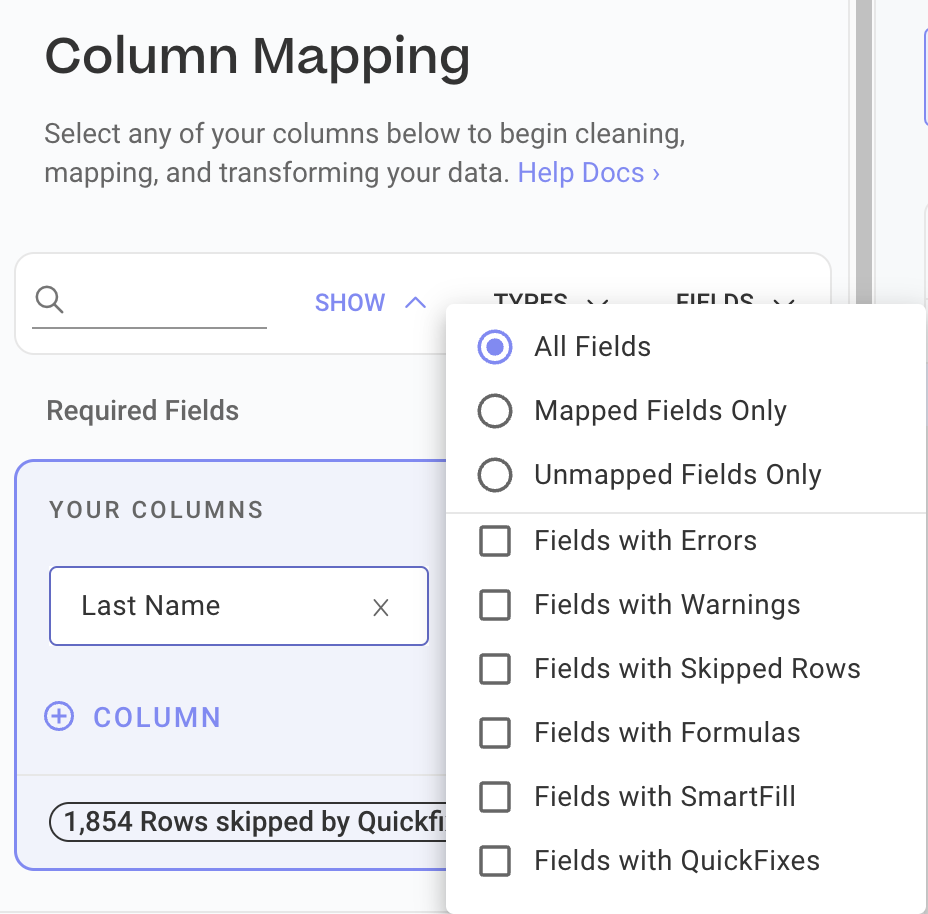
Select the column types
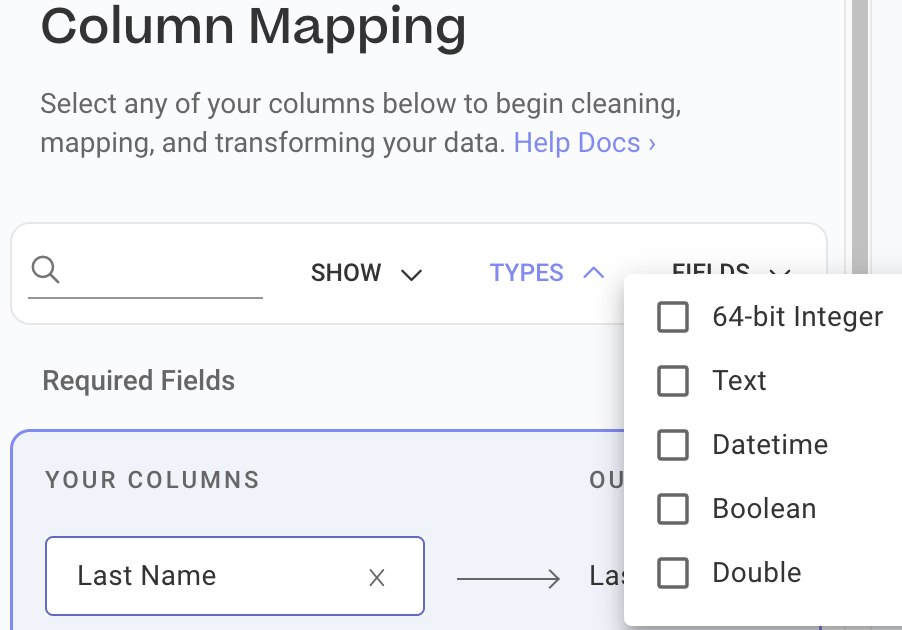
Select required/optional fields or specific columns by name

Red Highlighted RowsAny boxes that appear in red indicate there is no matching value on Mosaic or there is a typo for this cell. Please confirm if there is a typo, or if the value does not exist on Mosaic.
If this is a typo, you can update the value in the uploader in the "Our Column" section.
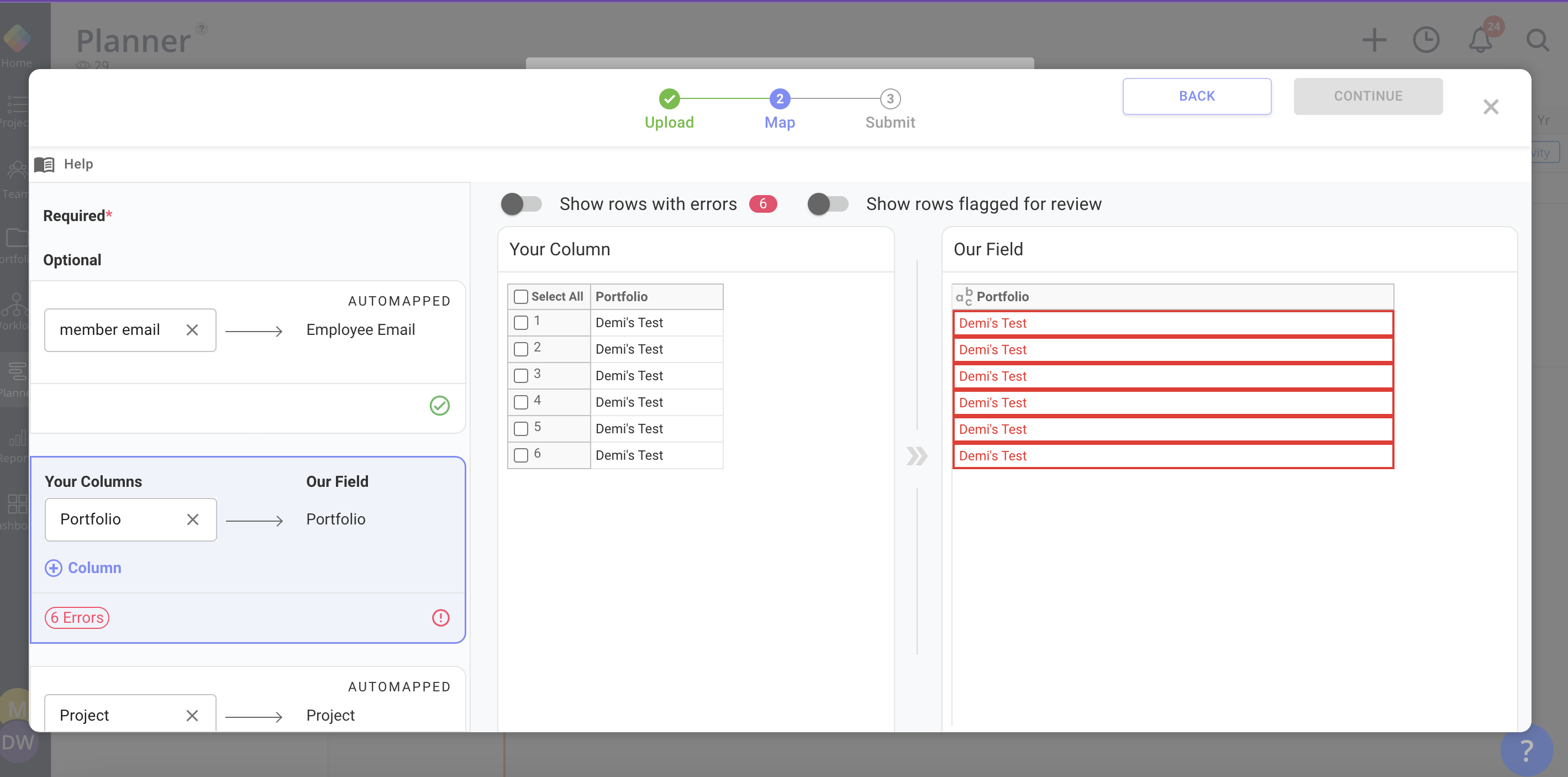
Remove Applied QuickFix
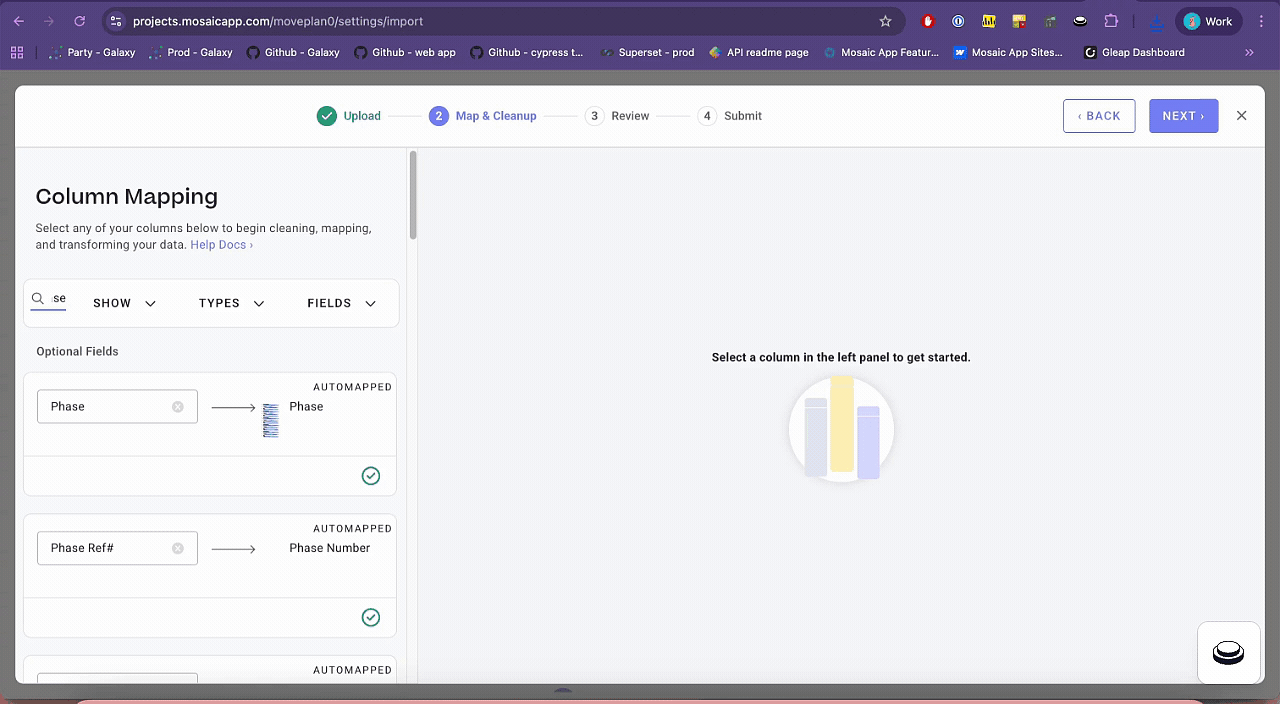
- After you've confirmed the sheet is filled in correctly, click
Continue. You may see a message like this:
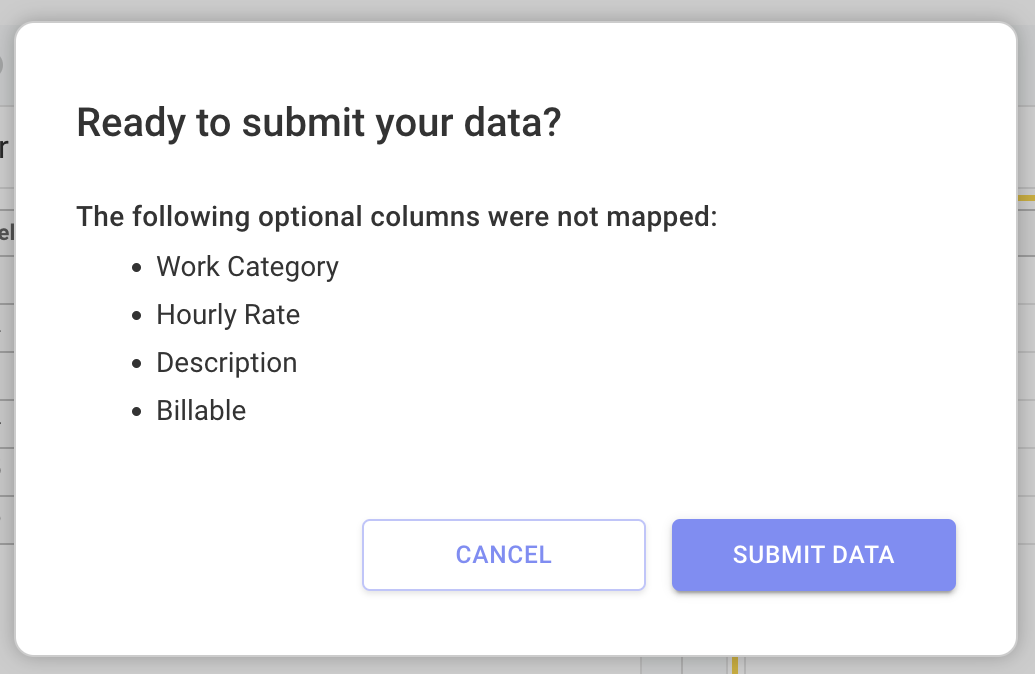
From here press Submit Data
- When the data is successfully uploaded, you will see see a message like this:
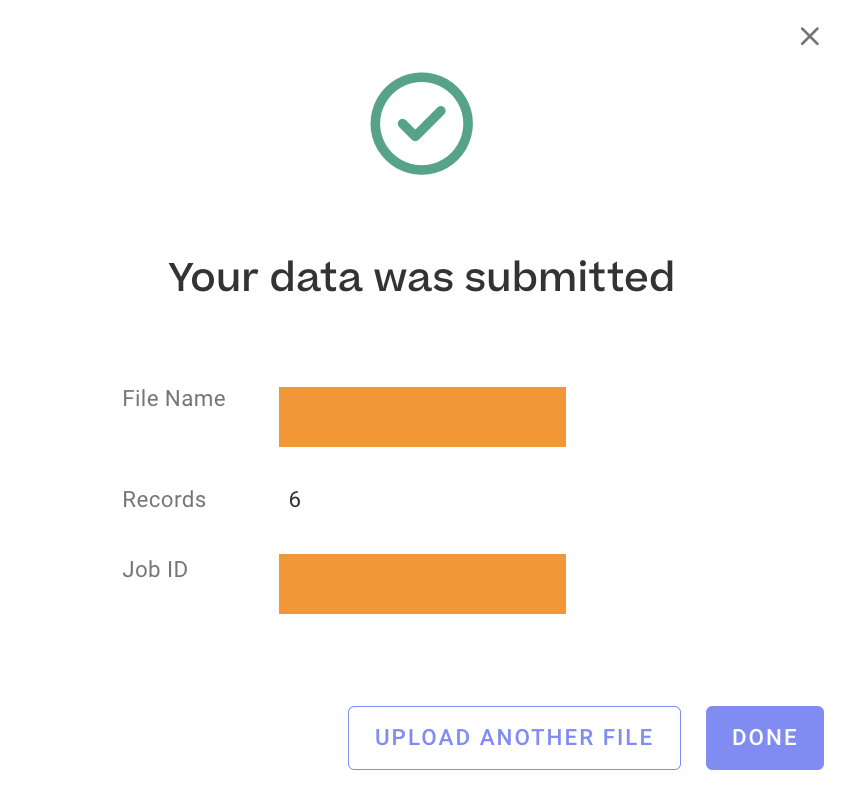
Part 3: Complete the Import
- Click done to close the modal. Under the Draft Import section, click on the
Importbutton for the file that was just uploaded to review the import.
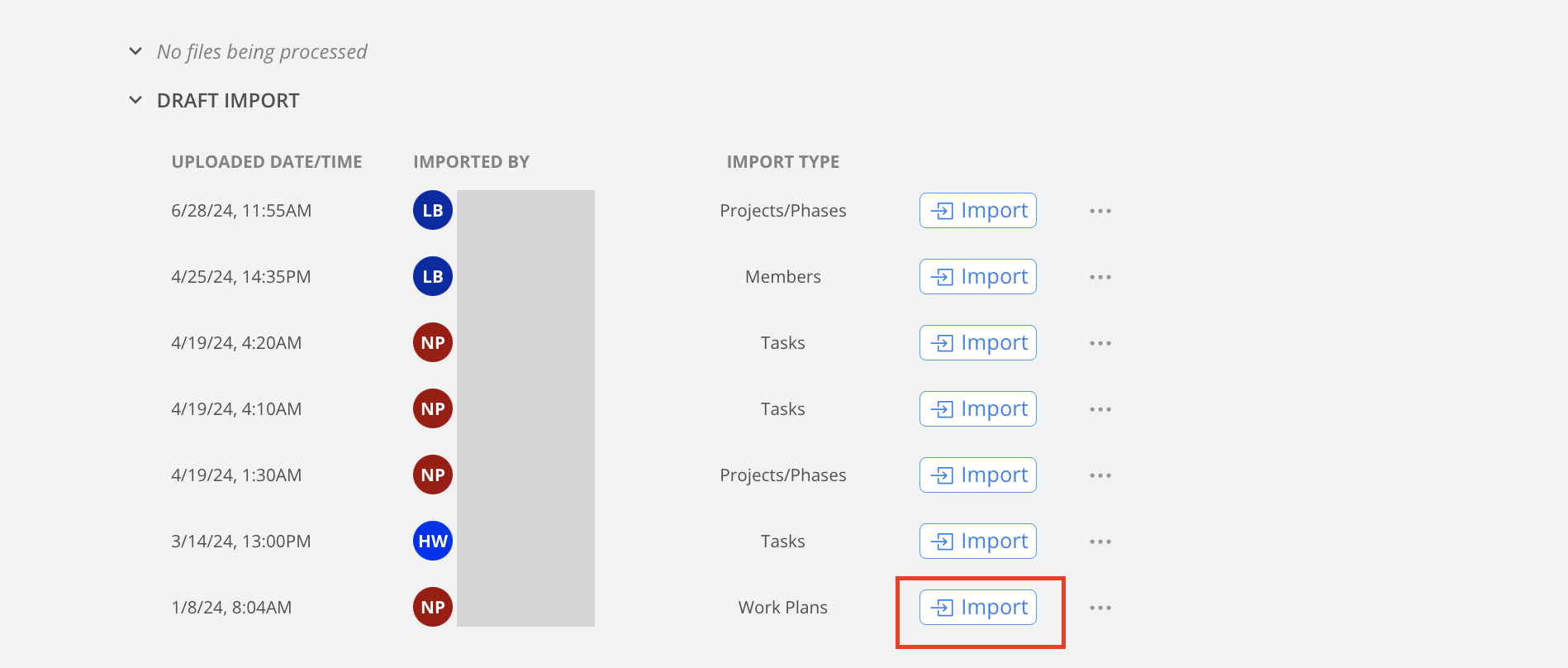
- New employees on the file will show on here. You can change their role by clicking on the dropdown.

- Change to All Members Imported View to see members linked with the existing members in Mosaic.
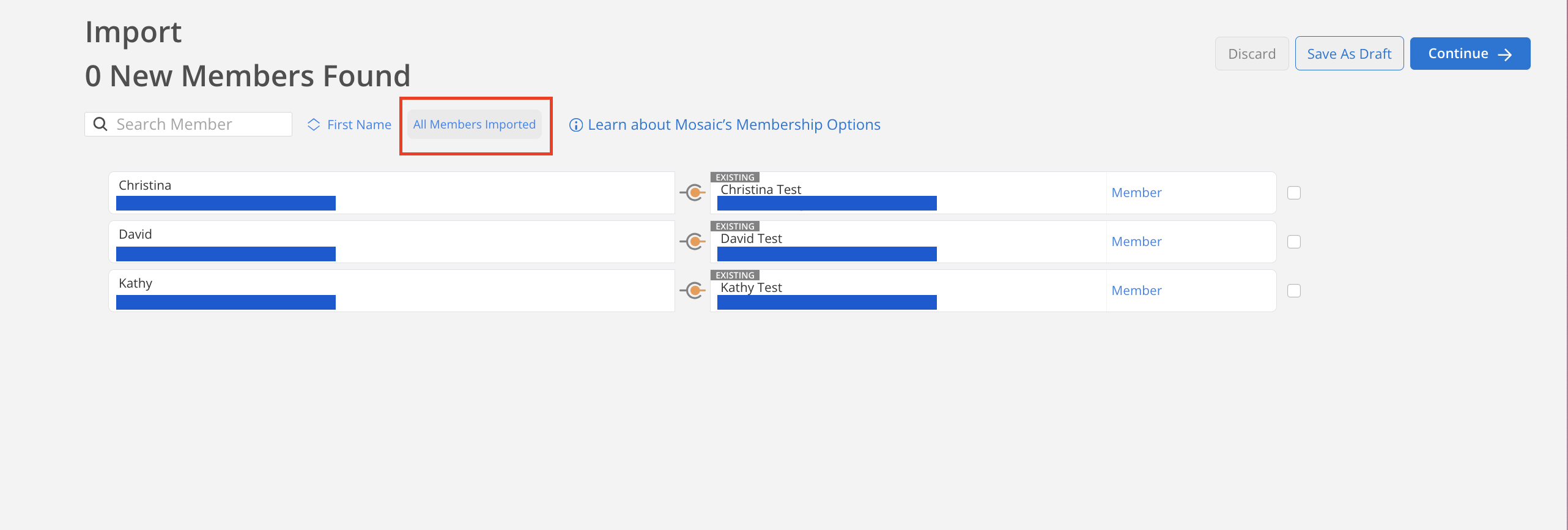
If you want to modify the member linked with existing, click on the member name and click select Alternate. Then select the member that you want to link or Import as New.
Once you are finished reviewing your Employees, click Continue.

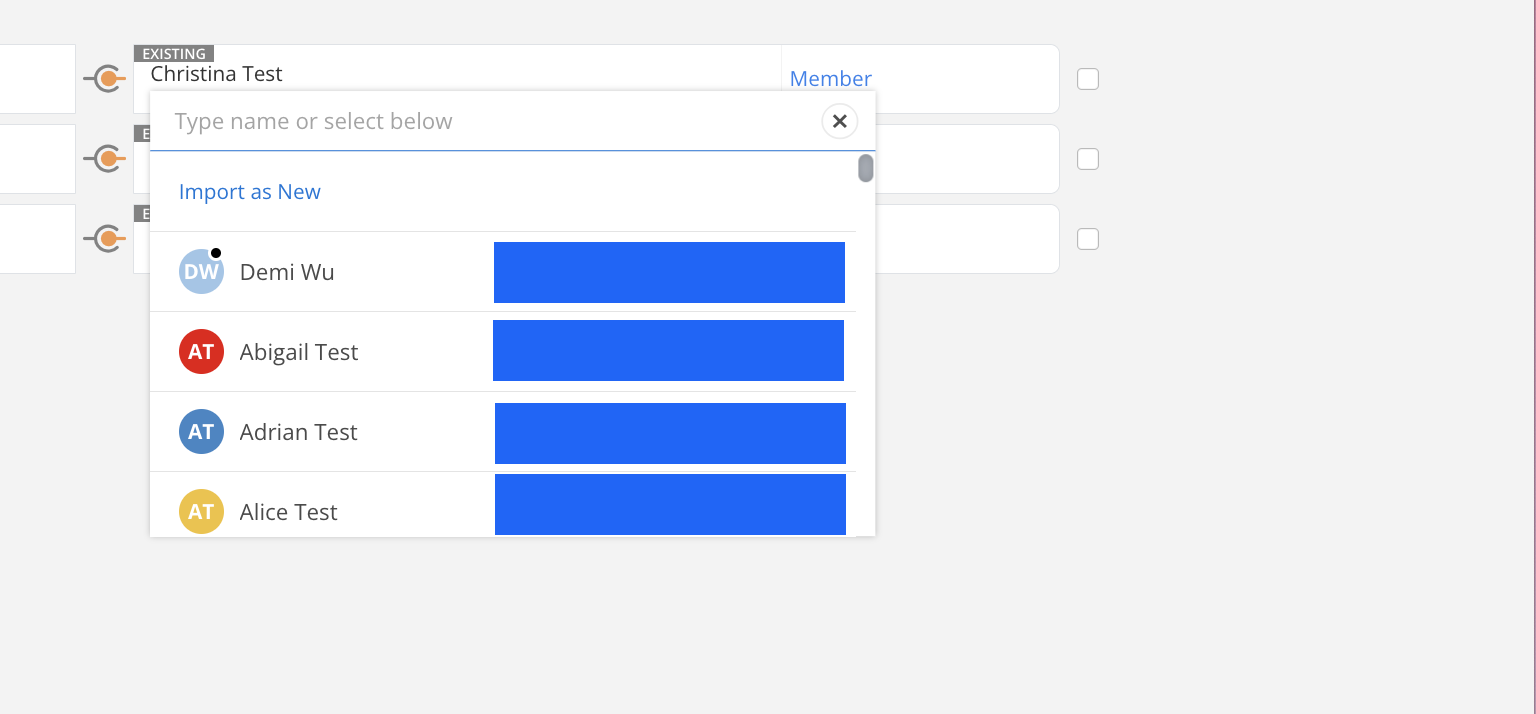
- On this page, Projects, Phases, Subphases and Work Categories can either be linked with existing or imported as new.
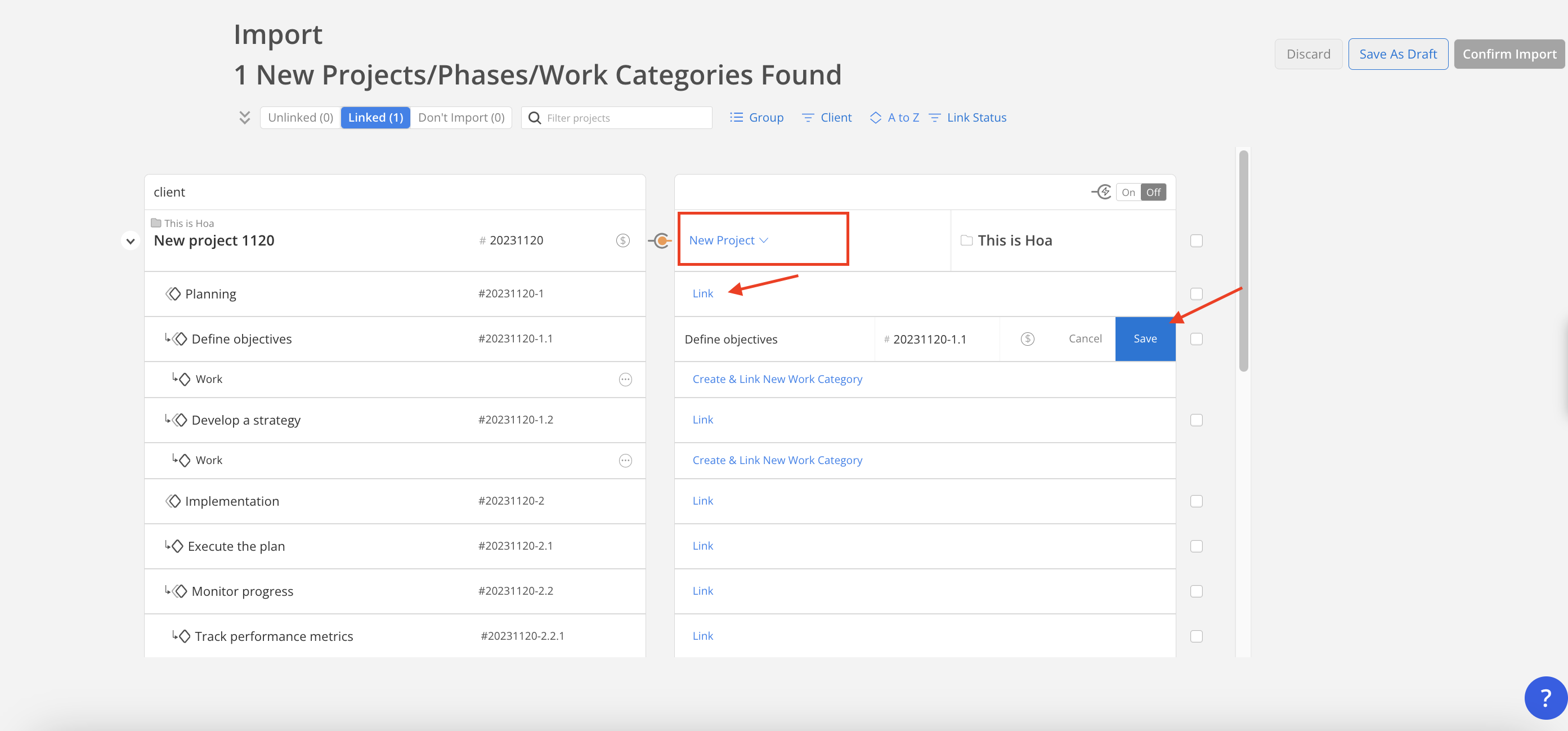
- To link a project with existing, click the plus icon on the right side and select an existing project to link. Click Save.
Archived ProjectsArchived projects will not show i the menu. To link to an archived project, unarchive the project first.

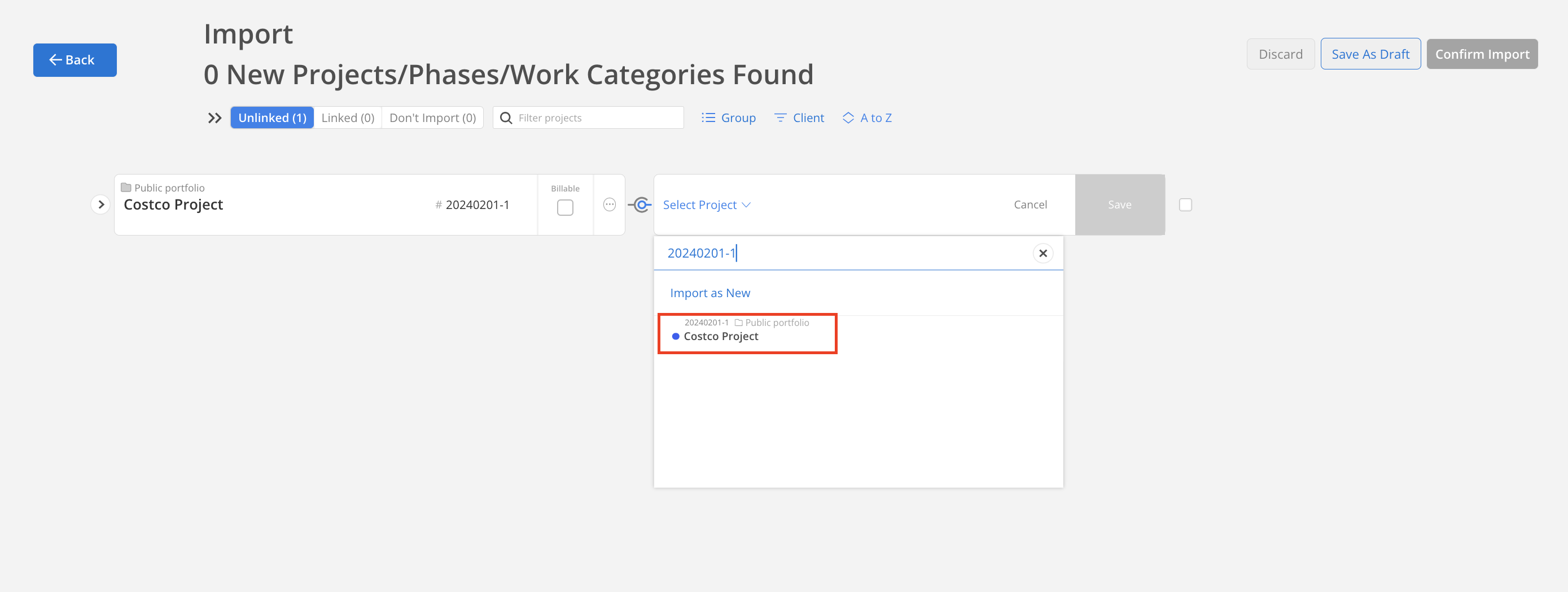

- To link a phase with existing, click three dot on the mosaic phase, click link with existing phase. Click the lightning bolt icon on the top to automatically map all Phases.
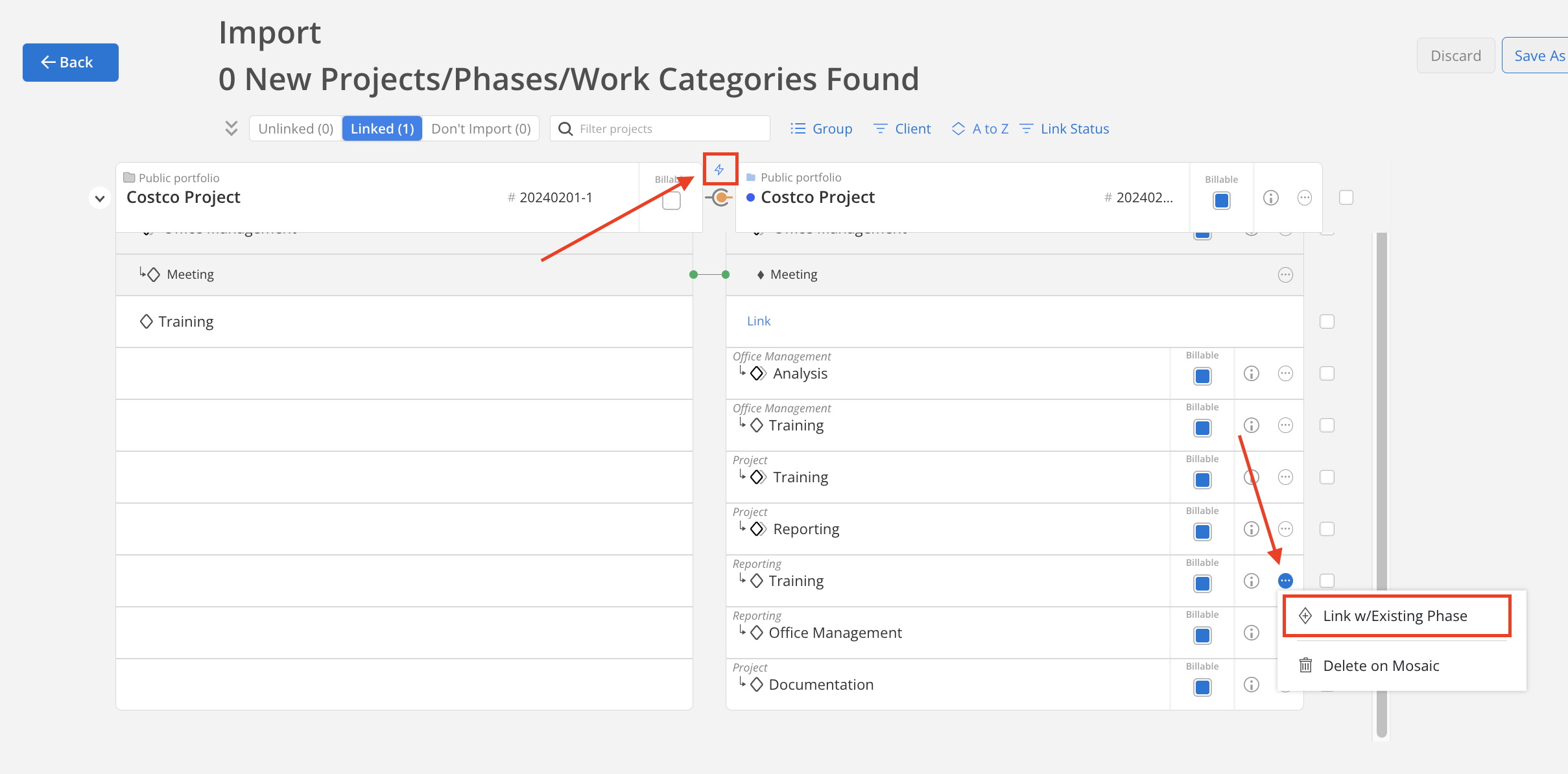
Select the phase on the left side to link, click save.
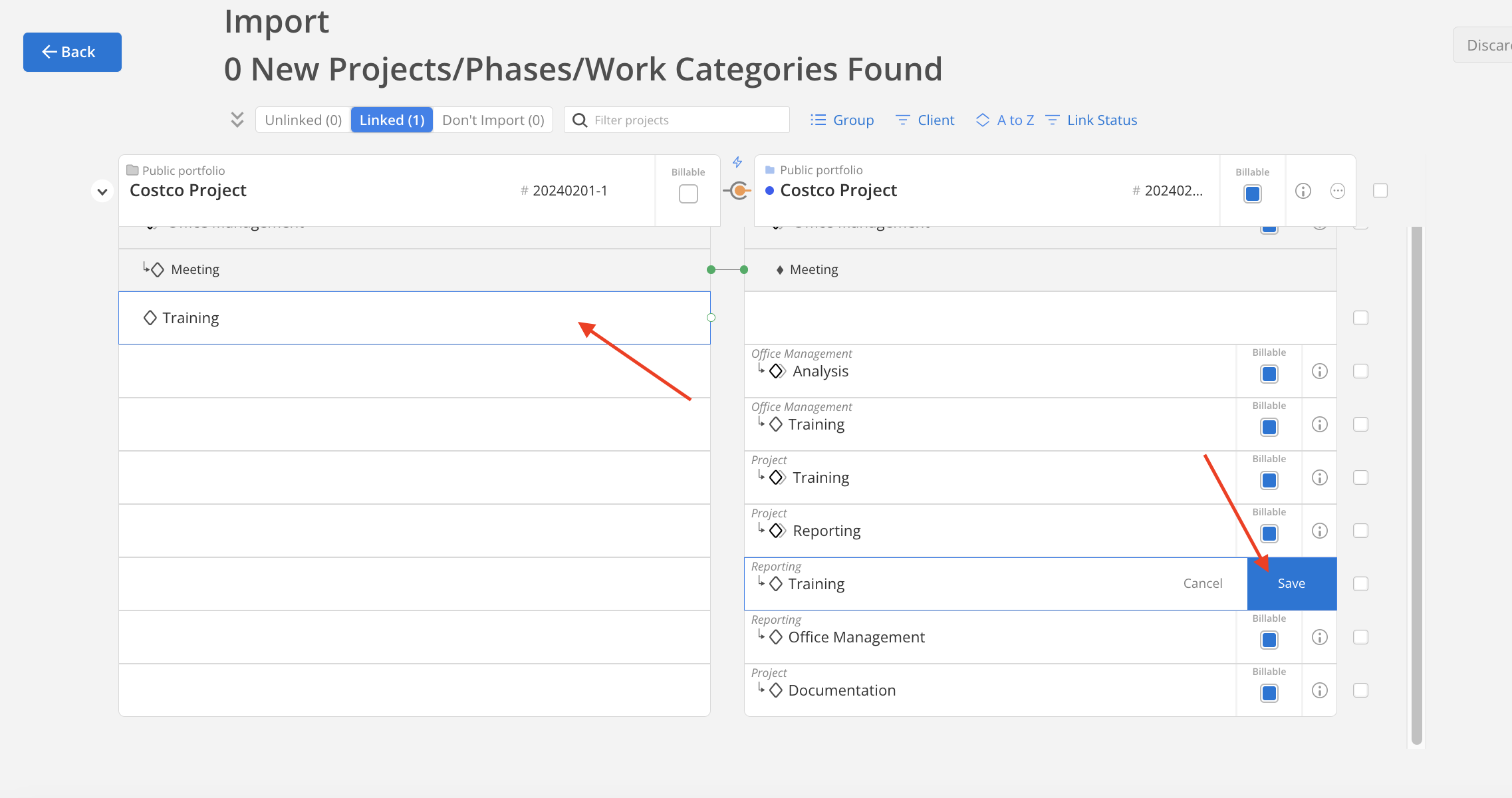
- All linked projects will show in linked section. Once you finish reviewing, click Confirm Import on the top.

New Project ConfirmationA confirmation modal will appear, displaying the total number of newly imported projects. If the number seems incorrect, click cancel and verify that all projects are mapped properly.
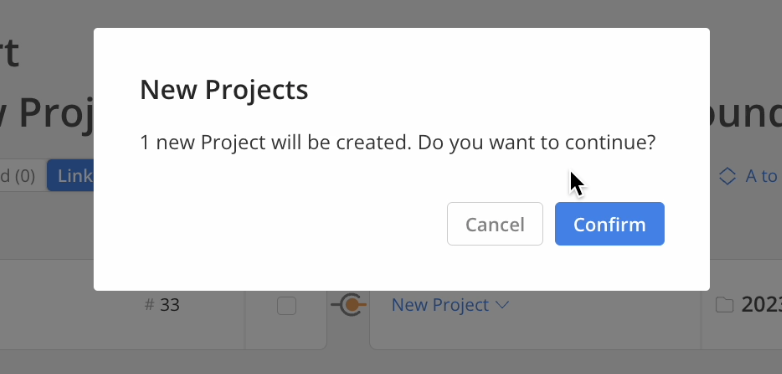
- Thats it! Once the file processing is completed, it will show in the Completed section. Please allow up to 24 hours for all Work Plan to finish populating on Mosaic.
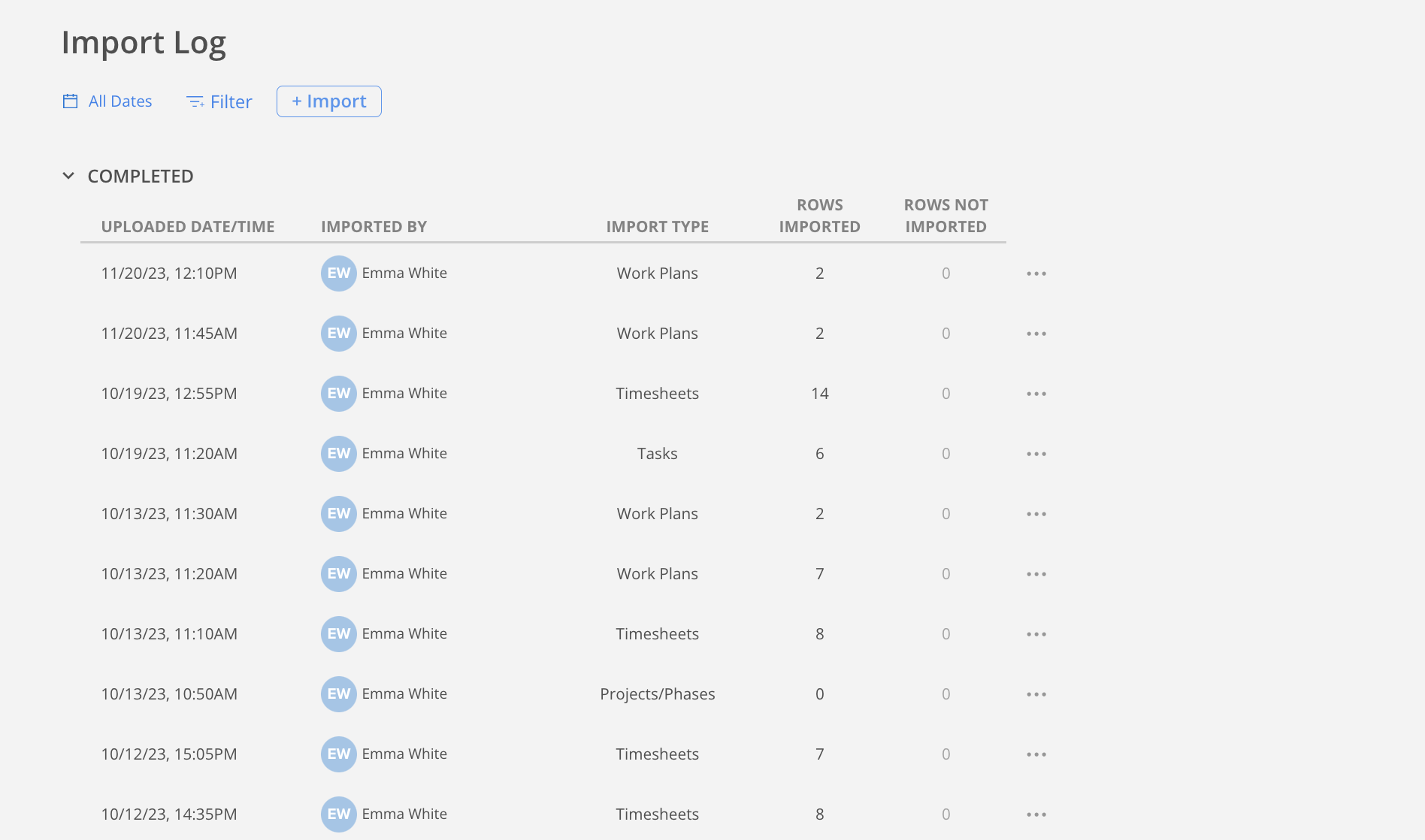
Time Off Work Plans ImportMosaic doesn't support Time Off Work Plan import at this moment.
Creating duplicatesIf the email, project name/number, phase name/number, work category, start/end dates, and description match a previously existing Work Plan, then the existing Work Plan will be updated with the new Work Plan hours.
If the optional fields (eg. description, phase number) are omitted in both the original and new, this will count as matching.
Legacy Work Plan Import (without Subphases)
Overview
If you do not have Subphases enabled in your account, you can still use the Legacy Work Plan Import (without Subphases).
Mosaic currently provides imports for the following:
- Work Plan
For other data types please see the guides for uploading into Mosaic, or get in touch with your Customer Success Manager for help.
Links to download import template:
Please review this carefully before uploading a data import file
It is recommended to use pre-existing projects and phases in MosaicIt is possible to create and import new projects for your imported Work Plan during the import process. However, to help prevent any mistakes when importing, it is recommended to import/update Work Plan details into a project that already exists on Mosaic.
If importing into a pre-existing project then the names and numbers must match exactly as is on Mosaic. If they do not match exactly you may get error fields during the import process, indicating where the names do not match, or unintentionally create new projects.
Here is an overview of the details needed for each column:
Field | Guide | Example | Required |
|---|---|---|---|
Email of employee.
| Yes | ||
Portfolio | Name of portfolio containing the project.
| Sample Portfolio | Yes |
Project Name | Name of the project.
| Central Park | Yes |
Project Number | Identifying project number.
| 1234.00 | Yes |
Phase | Phase within the project being worked on. | Surveying | Yes |
Phase Number | Identifying phase number.
| 123 | No |
Work Category | Type of work being performed.
This is only required if the matching phase has work categories. If this is a new phase, or one that has no matching work categories, this field is not required. | Planning | No |
Start | Date the work will start/started. | 2021-05-04 | Yes |
End | Date the work will end/ended.
| 2022-05-04 | Yes |
Total Hours | Total hours given to complete the project.
This is the default field for Work Plan hours. Hours Per Day is an alternative field to Total Hours. You can replace the "Hours Per Day" column with "Total Hours". | 30 | Yes |
Description | Description of the work Plan. | Fall 2022 Work Plan | No |
Every Line Denotes a New EntryFor each individual in the Work Plan, create a separate line. If a person is assigned to multiple phases or work categories, each assignment should also have its own line. For example, if you're adding two people to a project with two phases, but only one person is working on both phases, the spreadsheet should display three data lines.
Updated about 2 months ago
